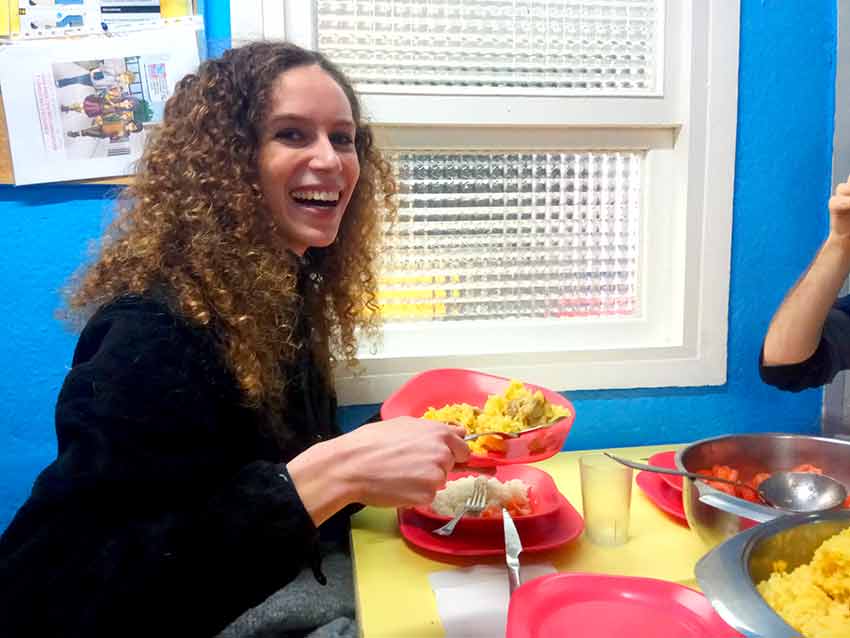Welcome to Facts Vibes! In our latest article, we’re diving into the flavorful world of Spanish food facts. From the rich history of paella to the cultural significance of tapas, get ready to tantalize your taste buds and expand your culinary knowledge. Let’s explore the delicious wonders of Spanish cuisine together.
The Delicious and Diverse World of Spanish Cuisine
The Delicious and Diverse World of Spanish Cuisine is a rich tapestry of flavors, ingredients, and traditions that reflect the country’s diverse regions and cultural history. From the iconic paella of Valencia to the savory tapas of Andalusia, Spanish cuisine offers a tantalizing array of dishes that captivate the senses.
One of the most striking aspects of Spanish cuisine is its use of fresh, high-quality ingredients. From succulent seafood along the coast to hearty stews in the interior, each dish showcases the best produce, meats, and seafood available in the region.
Furthermore, the culinary diversity of Spain is a testament to the country’s historical and cultural influences. The Moorish legacy is evident in the intricate spices and flavors of dishes from southern Spain, while the northern regions boast a rich tradition of hearty mountain fare.
In addition to its traditional cuisine, Spain is also known for its innovative chefs who continue to push culinary boundaries and blend traditional recipes with modern techniques. This fusion of old and new has resulted in a dynamic and constantly evolving food scene, making Spain a top destination for food lovers around the world.
Overall, the rich and varied landscape of Spanish cuisine is a source of pride for the country and a delight for anyone fortunate enough to experience it. Whether you’re enjoying a leisurely meal at a local tavern or savoring the creations of a Michelin-starred chef, the flavors of Spain will leave a lasting impression on any visitor.
Most popular facts
Spain is known for its wide variety of cured meats, including chorizo, jamón (ham), and morcilla (blood sausage).
Spain is known for its wide variety of cured meats, including chorizo, jamón (ham), and morcilla (blood sausage).
Paella, a traditional Spanish rice dish, originated in the Valencia region.
Paella, a traditional Spanish rice dish, originated in the Valencia region.
Spanish cuisine includes a diverse range of tapas, which are small appetizers or snacks.
Spanish cuisine includes a diverse range of tapas, which are small appetizers or snacks.
Gazpacho, a cold tomato-based soup, is a popular dish in Spain, especially during the summer months.
Gazpacho is a popular cold tomato-based soup in Spain, especially during the summer months.
Tortilla española, or Spanish omelette, is a classic dish made with eggs, potatoes, and onions.
The Tortilla española, or Spanish omelette, is a classic dish made with eggs, potatoes, and onions.
Spain is one of the top producers of olives, and olive oil is a key ingredient in many Spanish dishes.
Spain is one of the top producers of olives, and olive oil is a key ingredient in many Spanish dishes.
Churros, fried dough pastries often served with hot chocolate, are a beloved Spanish treat.
Churros are a beloved Spanish treat often served with hot chocolate.
Patatas bravas, or spicy potatoes, are a common tapas dish consisting of fried potato chunks served with a spicy tomato sauce.
Patatas bravas, or spicy potatoes, are a common tapas dish consisting of fried potato chunks served with a spicy tomato sauce.
Pintxos, similar to tapas, are small snacks typically pierced with a toothpick and are a specialty in the Basque region.
Pintxos are small snacks similar to tapas, typically pierced with a toothpick, and are a specialty in the Basque region.
Spanish cheeses such as Manchego, Cabrales, and Mahón are highly regarded and enjoyed both domestically and internationally.
Spanish cheeses such as Manchego, Cabrales, and Mahón are highly regarded and enjoyed both domestically and internationally.
Empanadas, savory pastries filled with ingredients like meat or vegetables, are a popular snack or meal in Spain.
Empanadas are a popular snack or meal in Spain.
Seafood plays a prominent role in Spanish cuisine, with dishes like paella de mariscos (seafood paella) showcasing a variety of fresh seafood.
Seafood plays a prominent role in Spanish cuisine, with dishes like paella de mariscos (seafood paella) showcasing a variety of fresh seafood.
Saffron, a prized and expensive spice, is often used in Spanish cooking, particularly in rice dishes like paella.
Saffron is a prized and expensive spice commonly used in Spanish cooking, especially in rice dishes like paella.
Calçots, a type of green onion, are a seasonal delicacy in Catalonia and are often grilled and served with romesco sauce.
Calçots are a seasonal delicacy in Catalonia and are often grilled and served with romesco sauce.
Turrón, a nougat confection typically enjoyed around the holidays, is a sweet treat with Moorish origins that has become a staple in Spanish desserts.
Turrón is a sweet treat with Moorish origins that has become a staple in Spanish desserts.
In conclusion, Spanish cuisine embodies a rich history and diverse culture, celebrating a vibrant tapestry of flavors and ingredients. From the iconic paella to the mouthwatering tapas, Spanish food offers a true culinary adventure that continues to captivate food enthusiasts worldwide. So, whether you’re savoring traditional dishes or exploring modern gastronomic trends, immerse yourself in the delectable world of Spanish cuisine for an unforgettable dining experience.
